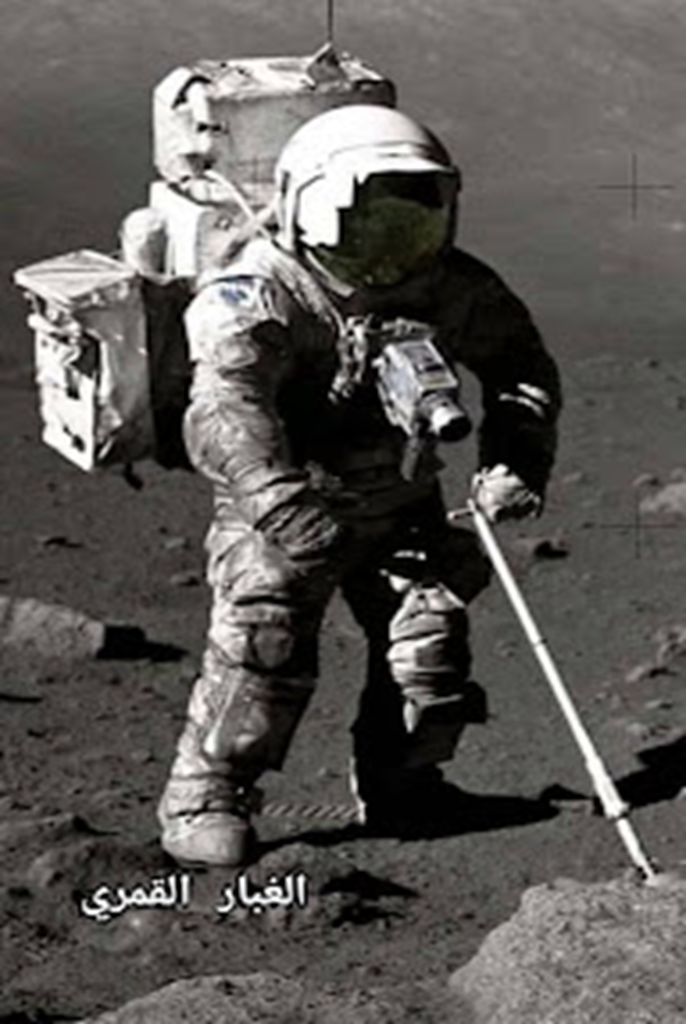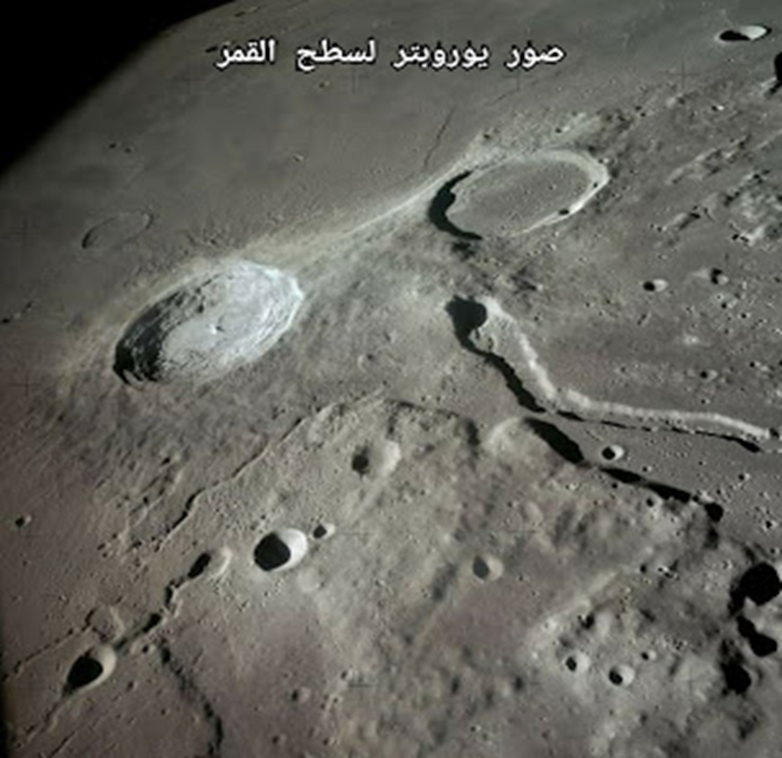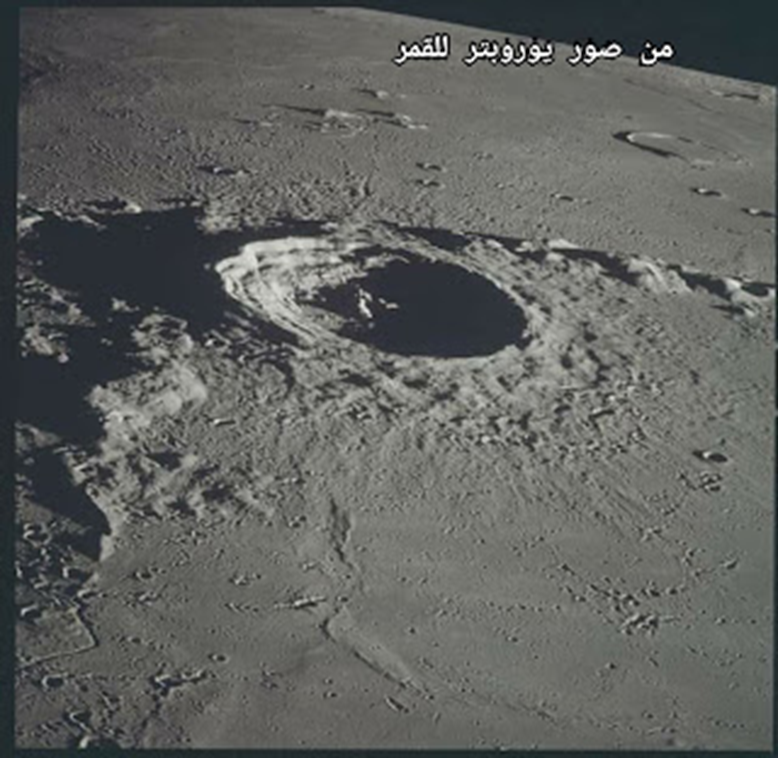Five Reflectors on the Moon

Moon away
For nearly four decades, a group of scientists has been studying the measurement of the moon's regression in its orbit or the moon's continuous departure from the Earth by emitting a focused beam of laser beams on reflective plates known as "reference reflectors".
It is the five reflectors that were placed by the first astronauts in the Apollo flights, on the surface of the moon in precise locations, with the aim of measuring the duration and time of the journey of light from the earth to the moon and back.
However, they noticed during the laser tests that the above-mentioned five moon reflectors have become obsolete over time and have also become less effective in sending light in the opposite direction to the planet Earth.

Reference reflectors for rays on the moon
These are specially designed reflectors that were installed in five different areas on the lunar surface by astronauts from the successive Apollo flights.
And by means of reflectors on the moon, scientists were able to accurately record measurements of the changing distance between the Earth and the moon.
Monitoring and study were repeated from several different locations and time periods over the past four decades.. but
? What is the reason for the low effectiveness of lunar reflectors
lunar dust
In an attempt to reach the reasons and the truth about whether layers of lunar dust, fine and scattered, are responsible for this failure in performing its mission to reflect the laser, the scientists conducting the study thought of implementing another plan and it was as follows:
They shot a laser beam of light at a much smaller reflector than the lunar reflectors that are disrupted by lunar dust, but this little reflector is state-of-the-art, a reference reflector that's been installed on a NASA craft, and this satellite orbits hundreds of kilometers at a high speed. The hour, and despite the difficulty of the experience, they have had success in implementing this alternative plan....
Study of the reference reflectors of the moon
The results of this study were published in this month's issue of the Journal of Earth, Planets and Space
(Earth, Planets and Space), which deals with specialized astronomy studies. These are the five reference reflectors installed on the lunar surface by the astronauts of the first Apollo mission and the Soviet unmanned spacecraft.
One of the most important scientific instruments on the surface of the moon, which teams of human astronauts left on the surface of the moon during their mission, are these reflective panels.
Simply it does a similar job to the measuring tape that we use in our lives, by which physical astronomers can accurately measure the distance between the moon and the planet, and this is done by determining the time it takes for the laser beam emanating from the earth to reach the surface of the moon, reflect on its surface, and then return Back to the surface of the Earth and this trip takes place in about (2.5 seconds), of course half the time to go and half to return from the moon.

? How does the light beam bounce off the moon
This light reflection occurs thanks to a multifaceted combination of glass-cubic corners.
These photonic devices respond to incoming light in the opposite direction in the direction it came from, ensuring that the return reflectors send photons of light in a narrow, precise bend. Over time, these repeated calculations will allow researchers to paint a clear picture of the moon's orbit, its exact orientation in space, and even its interior composition.
New reflective panels
But the suitcase-sized moon reference reflectors that made it to the moon between 1969 and 1973. They suffered from the blemishes of obsolescence.
Tom Murphy, a physicist from the University of California, San Diego, who was not involved in the study, revealed that "the effectiveness of the reference reflectors is only a tenth of what scientists expect from them, and that the light reflections back to Earth through it are very weak." Perhaps it is due to the accumulation of lunar dust on them, which is usually produced by meteorites that strike the surface of the moon.

This dust covered the uniforms of astronauts during their visits to the moon, even when they returned to the spacecraft and spread inside it, and space scientists expect that it will cause major problems if humans think about the stability of the moon,
The lunar orbiter (European)
Nearly 50 years have passed since then when the spacecraft was fitted with a single reference reflector the size of a large paperback book, and the spacecraft, dubbed the Lunar Reconsence Europeter, orbits the Moon every two hours and has so far provided Earth with millions of high-resolution images of the surface of the Earth. The moon and its terrain in detail...

The spacecraft provides a "perfect target," said Irwan Mazariko, a planetary scientist at NASA's Goddard Space Flight Center. ». It should be noted that Masariko, along with his colleagues, are testing the hypothesis that lunar dust is the cause of the disruption of the power of the moon's reflectors.
inverter moving target
But this deflector is at the same time a moving target, as the "European" orbits over the surface of the Moon at a speed of 5793.6 km per hour.
That's why Murphy, who leads the Apache Point Observatory for Lunar Laser Operations, known as "Apollo," believes
(a project that uses reflectors on the lunar surface), says that "reaching a moving target is very difficult". For this reason, we intend to use a smaller system while still allowing it to move.
Targeting the new Europter reflector
In 2017. Mazzarico and his partners began shooting an infrared laser light from a station near Grasse, France, about half an hour in the car from Cannes, toward the ship's reference reflector.

On September 4, 2018, at 3 am, the scientists recorded their first success, detecting 25 photons that had completed their round trip. The researchers also had three additional successes through the fall of 2019. After calculating the smaller size of the reference reflector on the 'orbit', Masariko and colleagues found that it returned photons more effectively than the Apollo reflectors. So far, there is little evidence to blame lunar dust for the reduced performance of reflectors on the lunar surface, according to Masariko, who revealed that they are gathering more information. But Murphy and other scientists believe the study's latest findings have helped clarify the picture further. He added: "For me, the results of the new study tip the scales in favor of the theory that lunar dust is the reason for the decrease in the power of the moon's reference reflectors...
Source: websites

